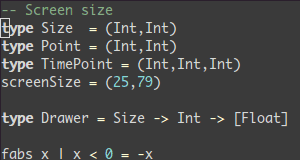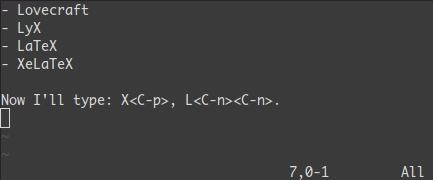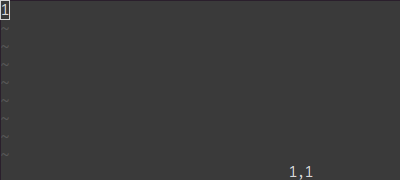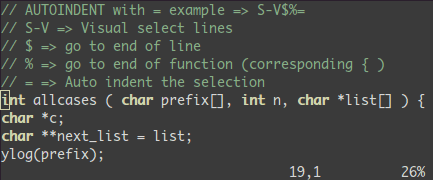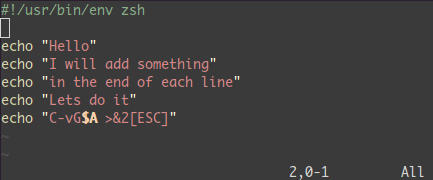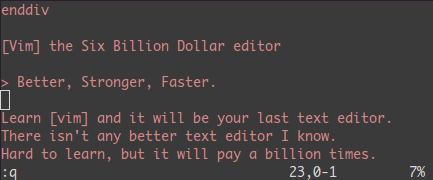PostgreSQL is a first-rate, enterprise-worthy open source RDBMS (relational database management system) that compares very favorably to high-priced closed-source commercial databases. Databases are complex, tricksy beasts full of pitfalls. In this two-part crash course, we'll get a new PostgreSQL database up and running with elegant ease, and learn important fundamentals.
['NewSQL' could combine the best of SQL and NoSQL and NoSQL offers users scalability, flexibility, speed]
If you're a database novice, then give yourself plenty of time to learn your way around. PostgreSQL is a great database for beginners because it's well documented and aims to adhere to standards. Even better, everything is discoverable -- nothing is hidden, not even the source code, so you can develop as complete an understanding of it as you want.
Planning
The most important part of administering any database is preparation, in planning and design, and in learning best practices. A good requirements analysis will help you decide what data to store, how to organize it, and what business rules to incorporate. You'll need to figure out where your business logic goes -- in the database, in middleware, or applications? You may not have the luxury of a clean, fresh new installation, but must instead grapple with a migration from a different database. These are giant topics for another day; fortunately there are plenty of good resources online, starting with the excellent
PostgreSQL manuals and
Wiki.
Installation
We'll use three things in this crash course: PostgreSQL, its built-in interactive command shell
psql, and the excellent
pgAdmin3 graphical administration and development tool. Linux users will find PostgreSQL and pgAdmin3 in the repositories of their favorite Linux distributions, and there are downloads on PostgreSQL.org for
Linux, FreeBSD, Mac OS X, Solaris, and Windows. There are one-click installers for OS X and Windows, and they include pgAdmin3. Any of these operating systems are fine for testing and learning. For production use, I recommend a Linux or Unix server, because they're reliable, efficient, and secure.
Linux and FreeBSD split PostgreSQL into multiple packages. You want both the server and client. For example, on Debian the metapackage
postgresql installs all of these packages:
# apt-get install postgresql
postgresql postgresql-9.0 postgresql-client-9.0
postgresql-client-common postgresql-common
See the
detailed installation guides on the PostgresSQL wiki for more information for all platforms.
The downloads page also includes some live CDs which make it dead easy to set up a test server; simply boot the CD and go to work. For this article, I used a Debian Wheezy (Testing) system running PostgreSQL 9.0.4, the current stable release.
Creating and destroying a new PostgreSQL database
You'll have to jump through a number of startup and user account hurdles to get started. First, verify that your PostgreSQL server has started by opening
psql, its interactive command shell:
$ psql
psql: could not connect to server: No such file or directory
Oops, PostgreSQL is not running. Go back to the appropriate installation guide to see how to start it on your system. On Debian, it starts automatically after installation, so the above command produces the following result:
carla@xena:~$ psql
psql: FATAL: role "carla" does not exist
Well, excuse me all to heck! But this really isn't a big deal, because PostgreSQL creates a default
postgres superuser with no password. So you have to change to this user, and then create a new user account that you will use to administer the database. On Linux and Unix you need to gain rootly powers, like this:
carla@xena:~$ su
root@xena:/home/carla# su postgres
postgres@xena:/home/carla$
There, now we can get some real work done! Let's create a
carla superuser for PostgreSQL:
postgres@xena:/home/carla$ createuser carla
could not change directory to "/home/carla"
Shall the new role be a superuser? (y/n) y
These PostgreSQL roles,
postgres and
carla, are PostgreSQL user accounts that are independent of system accounts. A role can be a single user or a group of users. Roles can own database objects, such as tables, and can assign privileges to access those tables to other roles. Use the
dropuser command to delete a role:
$ dropuser carla
Now, let's create a brand-new database:
$ createdb testdb
No news is good news; if this is successful there will be no feedback. You'll see a message only if something went wrong. Now let's destroy our new database:
$ dropdb testdb
Again, silence equals success.
Exploring PostgreSQL
Start by creating a new database so you have something to work with. There won't be any data in it yet, but that's all right. Once you've created to it, connect to it using the
psql command:
$ psql testdb
psql (9.0.4)
Type "help" for help.
testdb=#
Excellent! We are now sitting at the command prompt of our new database. The hash mark indicates that a superuser is logged in. (An angle brace would indicate a less-privileged user.) You would use
\q to quit (i.e.,
testdb=# \q).
man psql lists all of the PostgresSQL commands. All commands that begin with a backslash are internal
psql commands. They are not operating system shell commands, and they are not SQL commands.
Now, let's list all of our databases. (The last column of the table has been separated out so it'll all fit on the page, but this will be one table on your screen.)
$ testdb=# \list
List of databases
Name | Owner | Encoding | Collation | Ctype
-----------+----------+----------+-------------+-------------
postgres | postgres | UTF8 | en_US.UTF-8 | en_US.UTF-8
template0 | postgres | UTF8 | en_US.UTF-8 | en_US.UTF-8
| | | |
template1 | postgres | UTF8 | en_US.UTF-8 | en_US.UTF-8
| | | |
testdb | carla | UTF8 | en_US.UTF-8 | en_US.UTF-8
| Access privileges
+-----------------------
|
| =c/postgres +
| postgres=CTc/postgres
| =c/postgres +
| postgres=CTc/postgres
|
There's our little
testdb down at the bottom. The postgres database holds system data.
template0 and
template1 are templates for new databases, and
template1 is the default. (You can use any Postgres database as a template.)
template0 cannot be changed, but
template0 can. Let's take a look inside
postgres.
$ psql postgres
psql (9.0.4)
Type "help" for help.
postgres=#
Who are the postgres DB users?
postgres=# \du
List of roles
Role name | Attributes | Member of
-----------+-----------------------------------+-----------
carla | Superuser, Create role, Create DB | {}
postgres | Superuser, Create role, Create DB | {}
What tablespaces do we have?
postgres=# \db
List of tablespaces
Name | Owner | Location
------------+----------+----------
pg_default | postgres |
pg_global | postgres |
(2 rows)
Wait, back up: What are tablespaces? That's PostgreSQL's name for the physical storage locations of your database objects on disk. In other words, they're plain old directories on your filesystem. So you can control your disk layout and put your database objects wherever you like; for example, you could put a heavily-used index on a fast disk, or move objects to another partition or disk if you run out of space. Postgres has a squillion built-in objects, such as tables, functions, data types, aggregates, operators, and views. It also supports user-created objects. You can see the objects in the
postgres DB, as this abbreviated example shows:
postgres=# \ddS
Object descriptions
Schema | Name | Object | Description
------------+------------+-----------+----------------------------------
pg_catalog | abbrev | function | abbreviated display of inet value
pg_catalog | abs | function | absolute value
pg_catalog | abstime | data type | absolute, limited-range date and time
pg_catalog | aclitem | data type | access control list
pg_catalog | bit_and | aggregate | bitwise-and bigint aggregate
Press the Q key to exit the object descriptions.
\dd means "show descriptions of all objects that have descriptions." By default system objects are not shown, so to see these add
S.
Postgres is more than a RDBMS; it calls itself an an
object-relational database management system, or ORDBMS. This is not the same as a object-oriented database management system (OODBMS), but something of a hybrid, a traditional relational database with an object-oriented database model; it supports objects, classes and inheritance.
Viewing Tables
Let's look at some tables while we're in the
postgres DB. First, list its system tables:
postgres=# \dtS
List of relations
Schema | Name | Type | Owner
------------+-----------------+-------+----------
pg_catalog | pg_aggregate | table | postgres
pg_catalog | pg_am | table | postgres
pg_catalog | pg_amop | table | postgres
What's inside the
pg_am table?
postgres=# \d pg_am
Table "pg_catalog.pg_am"
Column | Type | Modifiers
-----------------+----------+-----------
amname | name | not null
amstrategies | smallint | not null
amsupport | smallint | not null
amcanorder | boolean | not null
[...]
amcostestimate | regproc | not null
amoptions | regproc | not null
Indexes:
"pg_am_name_index" UNIQUE, btree (amname)
"pg_am_oid_index" UNIQUE, btree (oid)
This is just the table structure without data. It shows the column names, the data type for each column, and any optional modifiers. Try creating your own table in your test database. For instance, this simple table tracks my underground comics collection:
CREATE TABLE comics (
name varchar(80),
publisher varchar(80),
date_published date
);
You can copy and paste this right into your own
psql prompt:
testdb=# CREATE TABLE comics (
testdb(# name varchar(80),
testdb(# publisher varchar(80),
testdb(# date_published date
testdb(# );
CREATE TABLE
testdb=#
The commas tell
psql where your columns end, and the semi-colon tells where your command ends. Try running the commands you've already learned on your test database and new table to see how they look. Use
DROP TABLE tablename;
That's all for today. Come back for Part 2 to find out how to populate tables with data, to learn about schema, keys, normalization, views, and tuples, and to discover how to use pgAdmin3.
REFERENCES
http://www.itworld.com/data-centerservers/196745/crash-course-postgressql-part-1
 Open the System Preferences
Open the System Preferences Navigate to the Screen Sharing preferences in the System Preferences
Navigate to the Screen Sharing preferences in the System Preferences Enable Screen Sharing in the Service list
Enable Screen Sharing in the Service list








